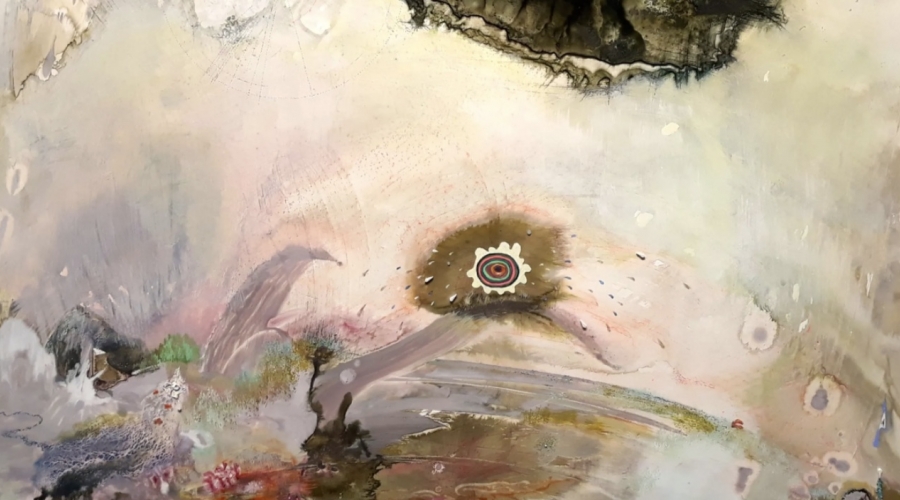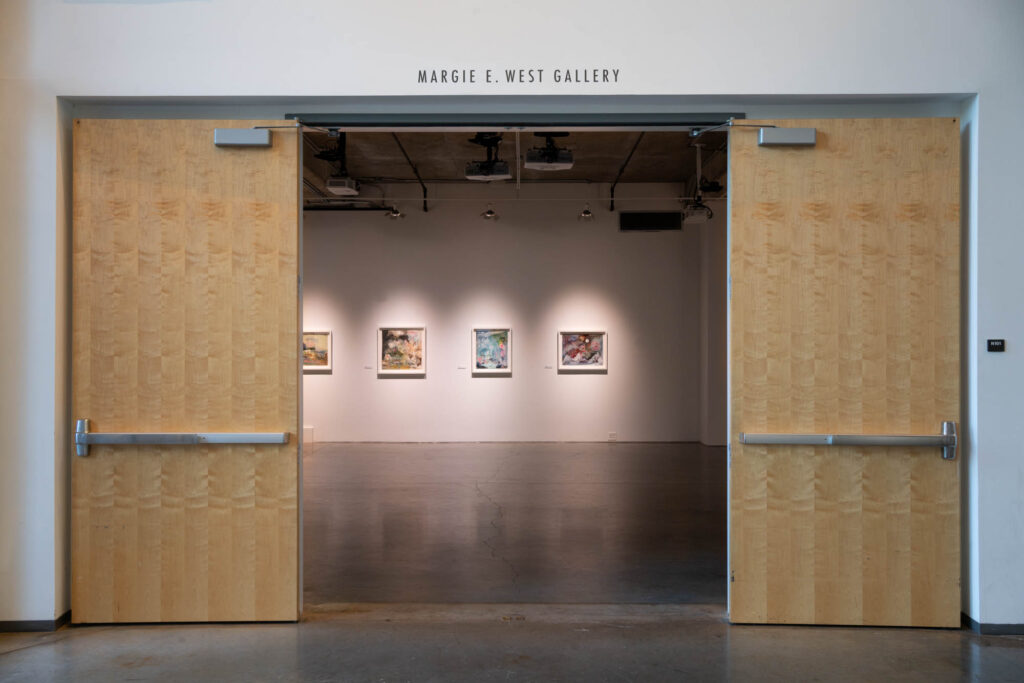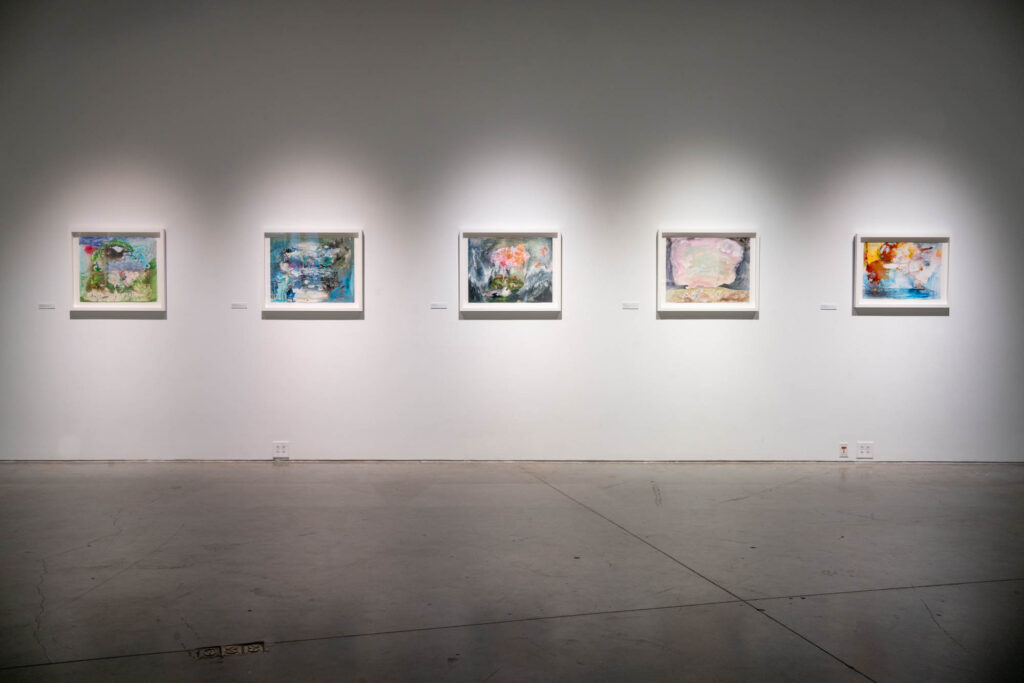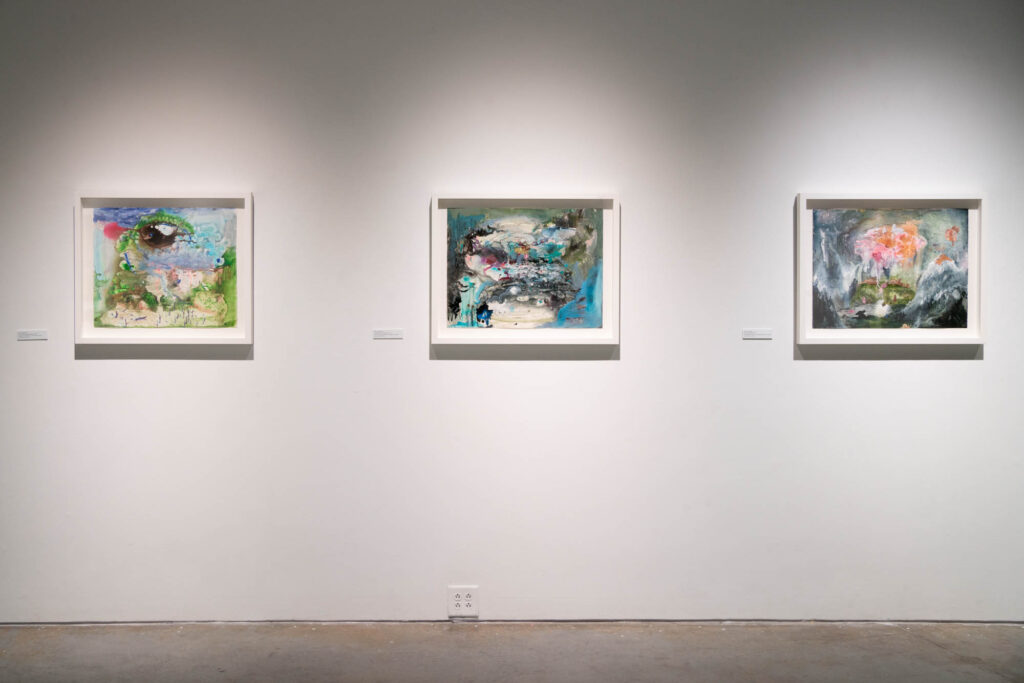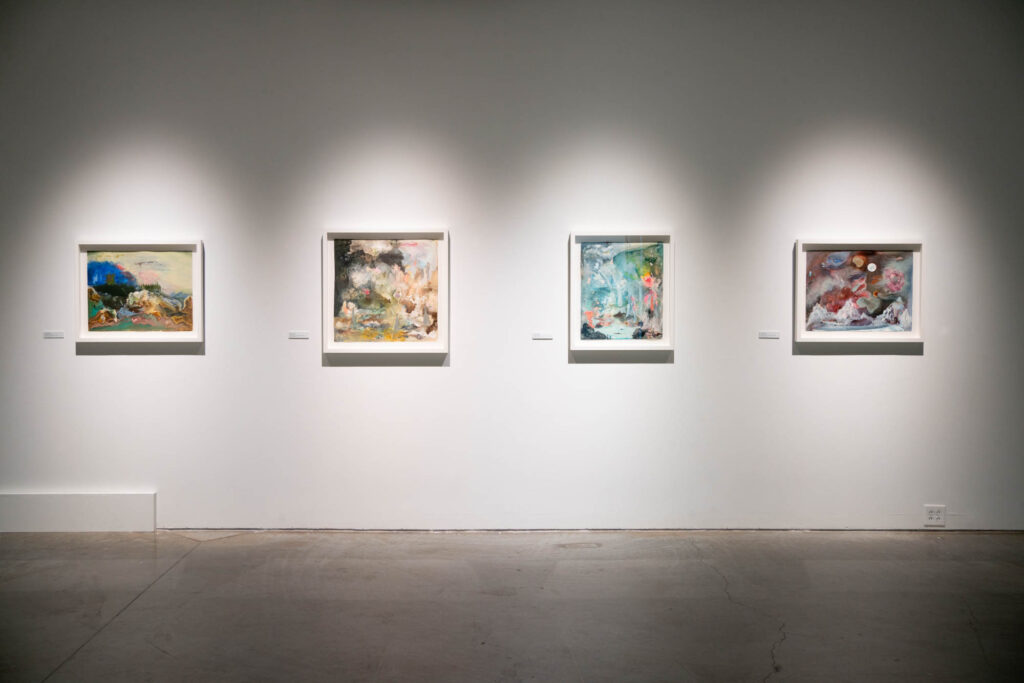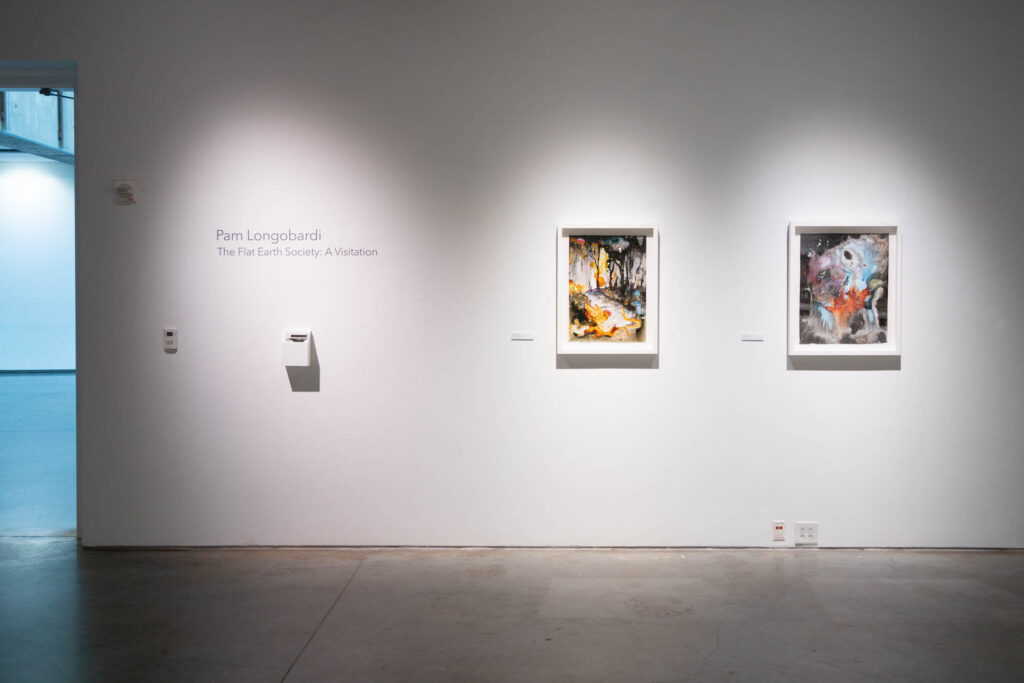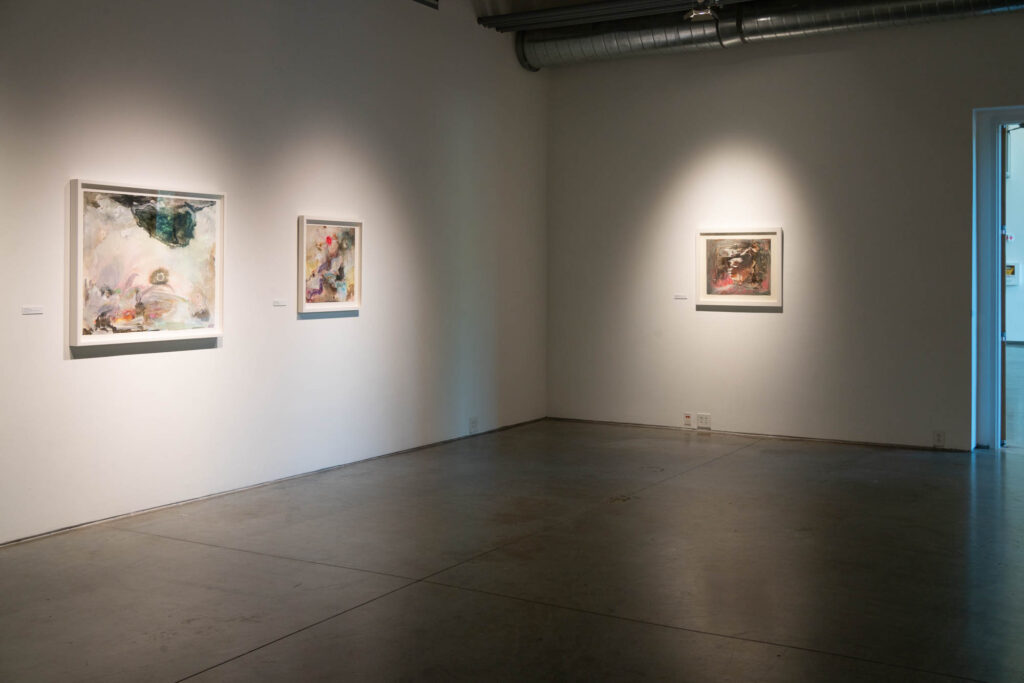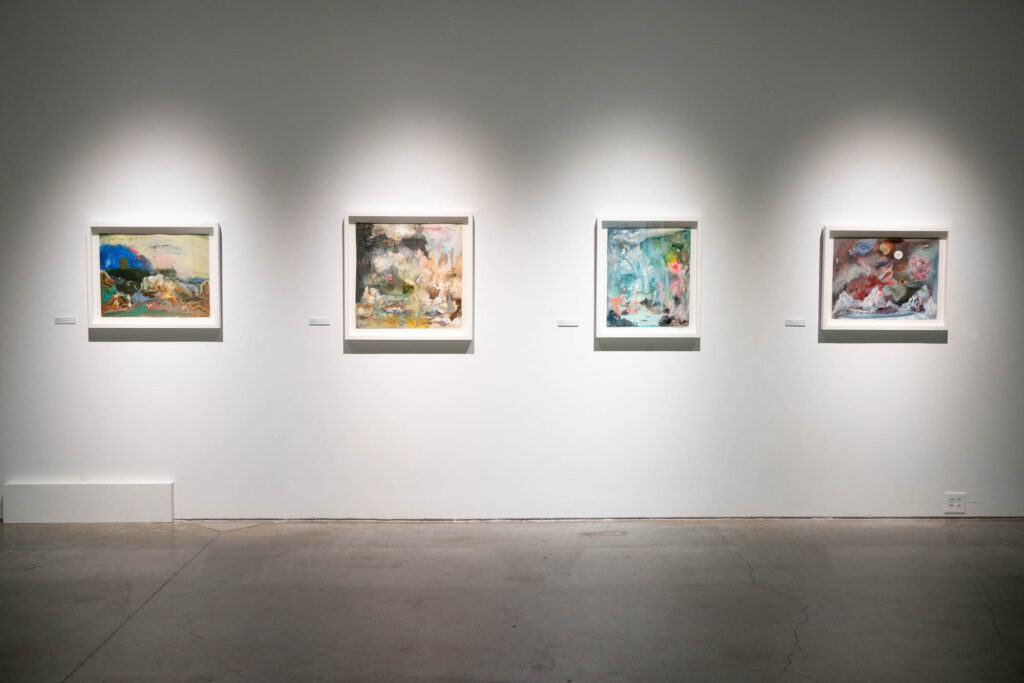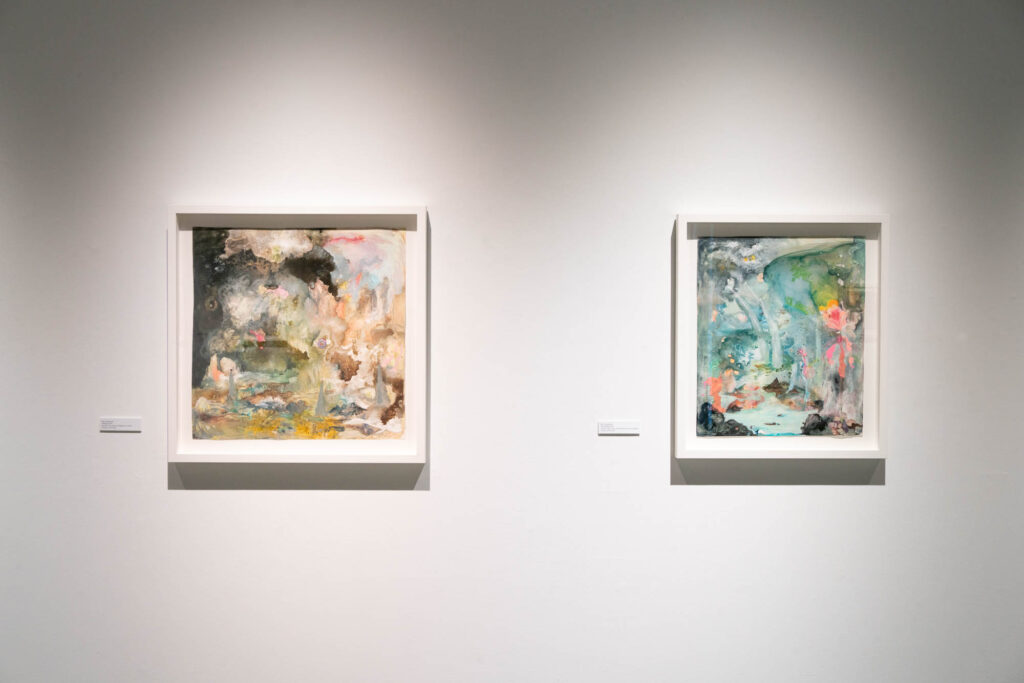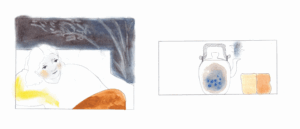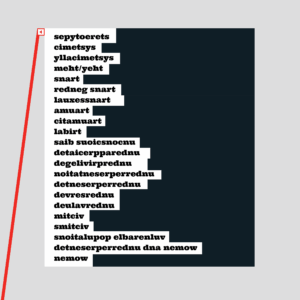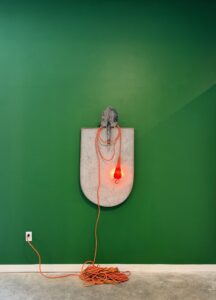Climate change and mass extinction are undeniably real and visible to all, yet so many heads are still in the sand while the world burns, melts, weeps, and dries up. In this way, Atlanta based conceptual artist Pam Longobardi is reminded of the infamous ‘Flat Earth Society’, a mid-19th c. re-invention based on archaic beliefs...
Climate change and mass extinction are undeniably real and visible to all, yet so many heads are still in the sand while the world burns, melts, weeps, and dries up. In this way, Atlanta based conceptual artist Pam Longobardi is reminded of the infamous ‘Flat Earth Society’, a mid-19th c. re-invention based on archaic beliefs that still holds weight in many circles of contemporary society. The paintings presented in this exhibition are a visitation from a farther future of imagined beautiful disasters. Storms unfold, release energies, dissipate and reform, moving matter in spectacular cataclysms. The grand narratives of human conquest are a story of the past. That ship has sailed.
There is only one story worth telling. A future for ourselves is constantly being written. By a mother for her elephant child. By an octopus for her human friend. By an old tortoise for his foundling baby hippopotamus. How will we transform?
Through modalities of forensic and archaeological investigation, Longobardi investigates the problematic psychological relationship between humans and the natural world while simultaneously suggesting an interconnected fate. Her current paintings use the genre of landscape painting to warn of untold changes, exploring the imaginary and near-real. She states, “I view the paintings as an antidote to the plastic work, but still wholly part of the Drifters Project.” A project in which she has transformed oceanic plastic debris, collected independently by Longobardi and as part of collaborative cleanup projects, into installations and public artworks whose ephemerality recalls the transient drift of their materials in situ. Of her paintings, Longobardi continues, “They are visualizations of vast forces of collision between natural processes (such as chemical patination of copper) and industrial human-made products (like plastics, acrylics, resin, and oils) that are happening around the world, all shrunken to the manageable scale of a painting space. Through these works, I’m able to control the outcome and nature always comes out on top: the sun will come out, rainbows will form, and there will be another day. This practice helps me manage my emotionally and physically difficult work with plastic.” Incorporating myriad media, Longobardi’s practice seeks to engage an emotional awareness of the environment and humanity’s place within it. Further, in site-specific performances Longobardi has communicated the urgency of global environmental crises by projecting alarm signals through various distance communication methods.
Longobardi is a recipient of the 2021 Margie E West Prize, an annual prize given to an esteemed alumni from the Lamar Dodd School of Art, inviting the artist to create a new exhibition for the Marjorie Eichenlaub West Gallery. She has held recent solo exhibitions at Momentum Gallery, Asheville, NC; Telfair Museum Jepson Center, Savannah, GA; and a recent performance on the steps of City Hall, Poitiers, France. Her work is held in numerous public collections including High Museum of Art, Atlanta, GA; Hunter Museum of Art, Chattanooga, TN; Institut d’Estudis Nord-americans, Barcelona, Spain; Pratt Institute, New York, NY; and Miami Metropolitan Museum, Coral Gables, FL. Longobardi currently lives and works in Atlanta, GA as Regents’ Professor and Distinguished Professor of Art at Georgia State University.
